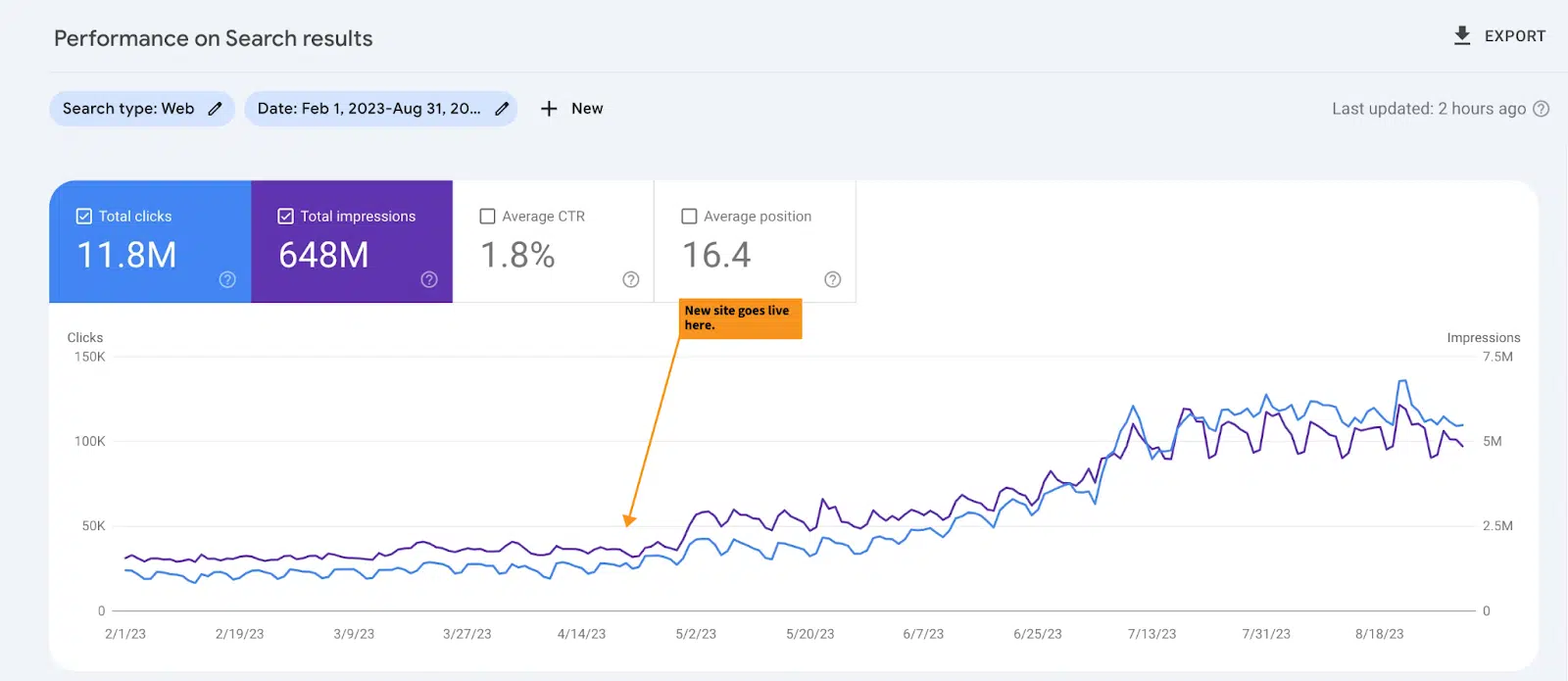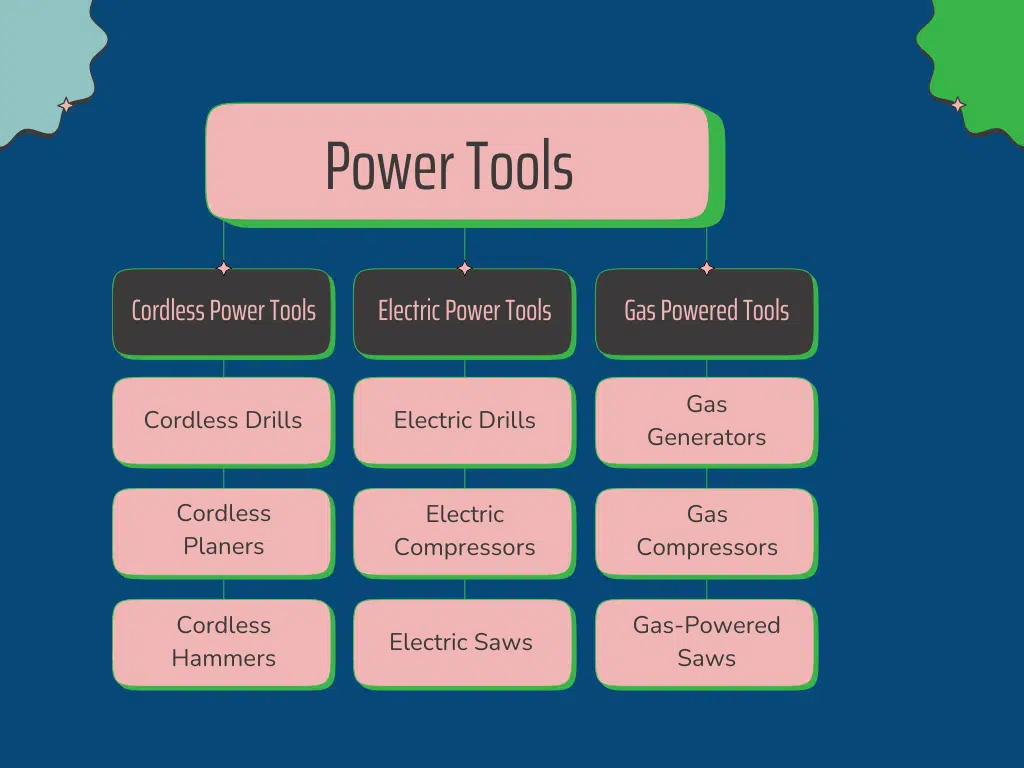[ad_1]
A site migration can feel like packing up your entire house and moving across the country. There’s much to keep track of, and you don’t want to lose any valuable possessions (or, in this case, SEO progress) along the way.
When done right, a site migration is a chance to improve site performance, enhance user experience and boost search presence.
However, with countless moving parts and multiple teams involved, having an organized plan is essential for a smooth transition.
To nail it, you need a rock-solid plan and a dedication to doing things right.
In this article:
What is a site migration?
A site migration refers to the process of making major changes involving a website.
This might include moving a site to a new domain or hosting provider, switching to a different content management system (CMS) or merging multiple websites into one.
Why is SEO important in site migrations?
Some people may wonder what SEO has to do with moving a site.
A site migration with SEO built into it can preserve rankings, avoid traffic loss, retain link equity, improve user experience and uncover new opportunities to improve the site. A site migration without SEO is laced with assumptions and poor decisions and can lead to a near-death traffic loss.
To illustrate how, when done right, SEO built into a site migration can massively impact search performance, see the image below.

After this client’s site migrated about mid-April 2023, they experienced the following results when comparing February 2023 to August 2023:
- A 455% increase in daily traffic.
- A 78% increase in top 10 rankings, with the top three rankings going from 8,081 to 13,591.
- Zero SERP features to 1,496 SERP features.
Preparing for your site migration
Before you jump into the deep end, take the time to plan:
- Define your goals and objectives. Whatever your website migration goals, document them and the steps needed to make them a reality. Get specific and make your targets measurable. This will help guide your efforts and give you a clear way to evaluate success post-migration.
- Conduct a thorough SEO audit. A thorough SEO audit assesses the site’s strengths and pinpoints areas for improvement. Part of this involves tracking your site’s current rankings, traffic levels and engagement metrics using tools like Google Analytics, Google Search Console and others.
- Come up with a project plan. Map out a detailed project plan. Break the migration into phases, assign roles and responsibilities and set realistic deadlines. (Don’t forget to build in time for testing and troubleshooting. Migrations rarely go off without a hitch, so planning for the unexpected is key.)
Google gives some additional best practice tips for managing a site move, including splitting your move into smaller steps, changing only one thing at a time and timing the move to coincide with lower-traffic times.
Dig deeper: 12 SEO pitfalls to avoid during a website platform migration
Managing and optimizing the new site structure and content
How people and search engines access your content, and what type of content you publish are both important to your SEO program moving forward.
Site structure
A well-organized site structure enhances user experience and helps search engines understand the relationships between your pages.
Think about how you might restructure and streamline your site’s navigation for the relaunch.
This will require taking a look at your target keywords and mapping them to the navigation and content.
Group related content together in a logical hierarchy, making it easy for website visitors and search engines to find exactly what they need.
I call this SEO siloing, and the benefits include:
- Creating a good user experience can result in more time spent on the website.
- Helping search engines determine relevance, which positions the site for ranking for target keywords.
The goal is to have the top of each silo (navigational category) be based on the more generic keywords and to build a hierarchy of subpages that support that keyword topic.

The picture above shows a sample structure for SEO siloing on a fictional power tools website.
The main categories are cordless power tools, electric power tools and gas-powered tools. The supporting subpages are shown underneath.
Content
Now onto the content that fills the pages on your site. As you head into a site migration, it’s a perfect opportunity to make improvements.
The goal is to ensure the quality of your content when you relaunch.
Here are some tips as you review the content on your site:
- Review top-performing webpages and be sure to prioritize those. For pages that aren’t performing, decide if they need a rewrite, need to be merged or 301 redirected.
- Assess the content with some guidelines in mind, such as Google’s E-E-A-T principles and its advice on helpful content.
- Review all content to make sure that it is evergreen and thorough. If it can be updated, do it. If entire topics are out of date, flag those to do a 301 redirect on them later on.
- Consider merging multiple pages on a similar or same topic into one more extensive guide on the topic. (Don’t forget to 301 redirect URLs later).
- Ensure that your new site’s content is optimized for your target keywords. Optimize titles, headings, meta descriptions and body content.
- Address duplicate content issues. Duplicate content can happen for multiple reasons, including trailing slashes on URLs, CMS problems, content that is too similar, boilerplate content and more.
If you need to add new content before the site migration, consider using AI content tools for efficiency—but be careful to follow search engine guidelines.
See my article on how to survive the search results when you’re using AI tools for content.
Improving user experience
Prior to a site migration is a good time to assess user experience factors on your site and make any adjustments moving forward.
Review Core Web Vitals
- Google’s Core Web Vitals focus on the responsiveness, speed and interactivity of a site. Benchmarking and seeing what may be improved on your current site is a good step before relaunching a new site.
- Google gives more insights in a help file here, and you can view the Core Web Vitals report in Google Search Console. Prioritize adjustments based on your available resources.
Mobile-friendliness
- Ensuring your site is optimized for mobile means things like having a responsive design, touch-friendly navigation, creating and formatting content with mobile readers in mind and much more.
Improving accessibility
- Evaluating and improving accessibility on your website can ensure your site is usable for people with disabilities.
- The gold standard for complying with accessibility is W3.org’s Web Content Accessibility Guidelines (WCAG). Prioritize minimum requirements first.
Enhancing security
- Some things you can do to improve the security of your site are evaluating your server / hosting provider (this may be a reason for your site move anyway), implementing HTTPS and updating software, plugins and authentication protocols.
Get the daily newsletter search marketers rely on.
Managing links
Properly mapping and redirecting URLs is essential for maintaining SEO value during a site migration. Without careful planning, you risk losing link equity.
Create a detailed spreadsheet that lists every old URL and its corresponding new URL. This redirect map will serve as a blueprint for implementing 301 redirects and ensuring no pages are lost in the transition.
Be sure to account for changes in site structure, URL naming conventions and content consolidation. A thorough redirect map is your best defense against broken links and lost SEO value.
Work with your development team to ensure that redirects are configured correctly:
- Steer clear of redirect traps like using short-term 302s instead of permanent 301s, creating messy chains or loops and forgetting that URLs are case-sensitive.
- Prior to launch, thoroughly test your redirects to ensure they are working as intended. Use tools like the SEOToolSet (full disclosure, this is my company’s SEO software) or Screaming Frog to crawl your old URLs and verify that they are being properly redirected to the correct new URLs.
Pay special attention to your most important pages, such as your home page, top-level categories and high-traffic blog posts.
Mapping your 301s is just one part of managing your links before a site migration. This is also a good time to review your inbound link profile.
Get rid of any links that may not serve your site well moving forward and identify new link opportunities for the site.
Monitoring technical SEO
Monitoring all aspects of technical SEO before and during a site migration is vital for site health and search engine visibility.
Here are some tasks to check off your list:
Review design modifications
- Changes to website design can impact SEO–one example is the coding aspect of building a site. Review design plans to make sure they support SEO objectives.
Audit your tracking tools
- Confirm that Google Analytics tracking is correctly configured. Moving to GA4 can be complicated, consider hiring analytics experts if necessary.
- Also, ensure Google Search Console is configured for your site.
Back up your existing site
- As a precautionary measure, back up your entire website – especially the XML Sitemap. Trust me, you need this. Download all images and other resources, and save a copy of your database if relevant.
Establish a test environment
- It’s common practice among web developers to create a separate testing environment to experiment with changes before making them live.
- Ensure this is set up and that search engines are blocked from indexing this staging area.
Validate structured data
Review metadata
- Ensure titles and meta descriptions are unique with original content and are correctly optimized.
Review robots directives
- Recheck the setup of your robots.txt file to ensure it is correctly blocking or allowing access as intended.
Create and manage sitemaps
- Develop a new HTML sitemap to aid users in navigating the new site smoothly.
- To some, this next point may seem counterintuitive, but it’s important: The second the new site is live, submit the old XML sitemap you archived earlier. This causes the search engines to find your redirects instantly.
Carry out launch day tasks
- On launch day, crawl the website to identify and resolve any emerging issues right away, such as crawl errors.
- Recommended tools include SEOToolSet’s site spider, Lumar and Screaming Frog. You can also use the various testing features in Search Console.
Managing post-launch activities
You’ve made it through the site migration process, but the work isn’t over yet. Keeping a close eye on your site’s performance in the weeks and months following the move is important.
Testing
The first step in post-migration testing is to conduct a comprehensive review of your site’s functionality.
This means testing every page, link, form and feature to ensure that everything is working as intended.
Give your website a thorough once-over by focusing on these vital areas:
- Navigation and internal linking.
- Forms and contact pages.
- Ecommerce functionality (if applicable).
- Mobile responsiveness and usability.
- Integrations with third-party tools or services.
- Site speed and responsiveness.
As you test, make note of any issues or errors you encounter and prioritize fixing them based on their impact on user experience and site performance.
Watching key metrics
With your tracking tools in place, it’s time to monitor your site’s performance and organic traffic levels.
Keep a close eye on your daily and weekly traffic in Google Analytics. It’s normal to see some temporary fluctuations after a migration, but if you notice a sustained drop in organic traffic, it’s time to investigate further.
Another key metric to monitor post-migration is your site’s keyword rankings and overall search visibility. Use SEO tools like Ahrefs to track your rankings for target keywords and monitor any changes over time.
Enhancing user experience
Beyond functionality, it’s important to take a holistic look at your site’s user experience and engagement post-migration.
Are visitors finding what they need easily? Are they engaging with your content and converting at the rates you expect?
You can use your analytics tools to dive into behavioral metrics such as goal completions, bounce rates and more.
If you notice a drop in conversions or engagement, dig deeper to identify potential issues or roadblocks.
Is there a particular page or step in your conversion funnel where users drop off? Are there certain user segments or traffic sources that are underperforming?
Consider reviewing the following areas that may need user experience improvement:
- Improving navigation and site structure.
- Optimizing content layout and readability.
- Enhancing calls-to-action and conversion points.
- Ensuring mobile-friendliness and responsiveness.
- Adding engaging visual elements and media.
You can use things like heat maps and surveys to get inside your visitors’ heads. Look for trends and sticking points, then use that data to fine-tune your site’s user experience.
Continuously refining
Once you’ve completed a successful site migration, the real adventure begins.
You’ll continue to keep a close eye on your site, run tests and make tweaks to ensure that it’s always performing at its best and delivering an exceptional user experience.
With a commitment to improvement, you can ensure that your migrated site survives and thrives in its new home for the long haul.
Opinions expressed in this article are those of the guest author and not necessarily Search Engine Land. Staff authors are listed here.
[ad_2]
Source link





